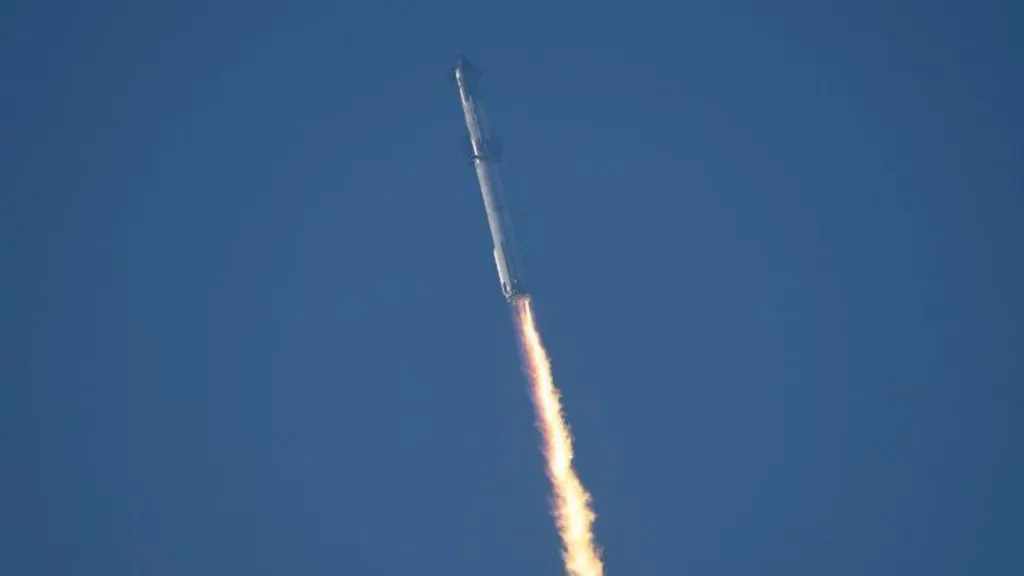
SpaceX Prepares for the Next Starship Launch
Elon Musk’s SpaceX pushes the boundaries of space exploration with its latest creation, the Starship rocket. Starship is the largest and most powerful spacecraft ever built, designed to revolutionize spaceflight. Unlike traditional rockets, which are discarded after use, Starship can be fully reusable. Musk’s vision is for Starship to be used like an airplane, landing, refueling, and launching again within hours.
SpaceX Prepares for the Next Starship Launch
SpaceX plans to launch Starship again on 13 October at 0700 local time (1300 BST). This will be the fifth flight of Starship, and expectations are high as the company aims to demonstrate the reusability of the spacecraft, specifically the return of the Super Heavy booster to the launch pad.
So far, Starship has performed simulated sea landings, called splashdowns. The upcoming launch aims to achieve something never done before—catching the Super Heavy booster in mid-air using the launch tower’s giant mechanical arms, called “Mechazilla.” Eventually, SpaceX plans to catch the top part of the rocket, known as the Ship, in a similar way. However, this will not happen on this flight.
What Makes Starship Unique?
Starship stands out due to its design and power. The rocket has two stages: the upper part, called the “Ship,” and the booster, known as Super Heavy. Thirty-three engines at the base of Super Heavy produce 74 meganewtons of thrust, making Starship twice as powerful as the Saturn V rocket that took astronauts to the Moon.
Starship stands over 120 meters tall, with the latest addition being a meter-long extension of the Super Heavy booster. It is fueled with a mixture of liquid methane and liquid oxygen, known as methalox. This combination allows for a cleaner and more efficient burn compared to traditional rocket fuels.
Starship’s Mission to Mars
SpaceX has ambitious plans for Starship, including missions to Mars. While none of Starship’s previous missions have been crewed, Musk and his company are working towards sending humans to Mars in the future. The goal is to make interplanetary travel feasible by using a fully reusable spacecraft.
Although a Mars trip isn’t planned soon, Starship’s impressive specifications lay the groundwork for such a journey. Musk envisions sending 100 people per flight to Mars, with the Ship parked in low-Earth orbit and refueled by a tanker spacecraft before continuing to Mars. This concept aims to make human life on Mars a reality and establish a sustainable presence on the Moon.
Challenges Facing Starship
The journey to make Starship fully reusable comes with challenges. Each test flight brings learning opportunities but also exposes weaknesses that SpaceX must quickly address. The rocket’s powerful engines generate extreme heat, and even minor flaws can lead to significant issues. SpaceX’s approach is to launch, learn, and fix problems as they arise, aiming to make the spacecraft reliable for future crewed missions.
Other Potential Uses for Starship
Launching Commercial Satellites
Beyond Mars missions, Starship has multiple uses. SpaceX intends to use Starship for launching commercial satellites, like Starlink. Starlink satellites need regular replenishment, and Starship’s large payload capacity makes it ideal for launching multiple satellites in one flight.
Support for NASA Artemis Program
NASA also plans to use Starship for its Artemis program, which aims to establish a long-term human presence on the Moon. Starship’s large capacity could also be useful for launching space telescopes, such as the Hubble or James Webb telescopes, and deploying infrastructure for future space stations.
Environmental Concerns of Starship Launches
A powerful rocket like Starship naturally raises concerns about its environmental impact. The U.S. Federal Aviation Administration (FAA) estimates that Starship launches will emit around 97,342 tonnes of CO2 equivalent per year if SpaceX proceeds with 25 launches annually. While this may seem significant, it is relatively small compared to the emissions from the commercial aviation industry.
However, Musk’s vision involves increasing the number of launches to hundreds per year, which could result in a much larger environmental footprint. SpaceX will need to balance its ambitious space exploration goals with efforts to minimize environmental impact.
External Link: Read more at BBC
Internal Link: Learn about space exploration technologies





